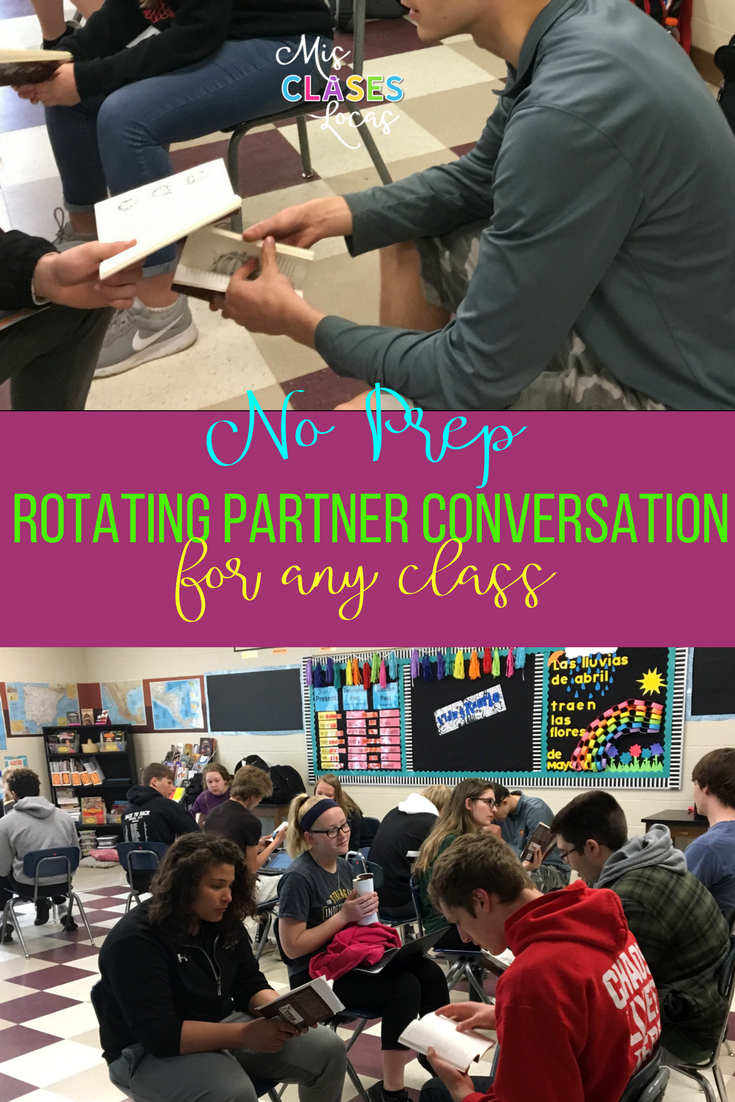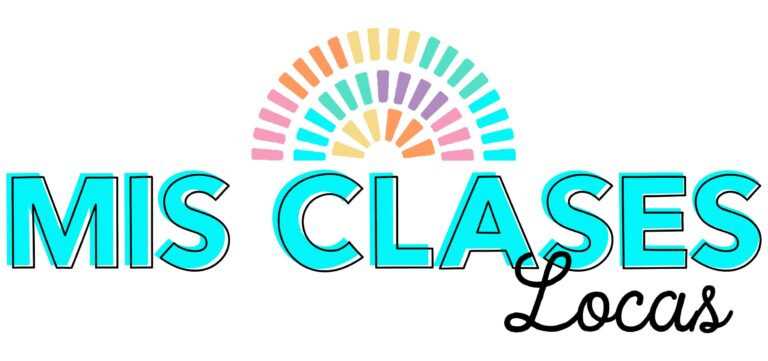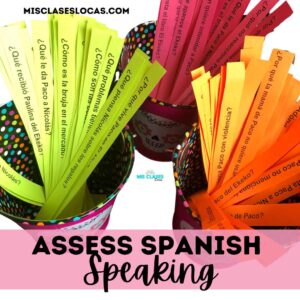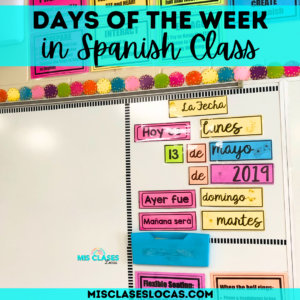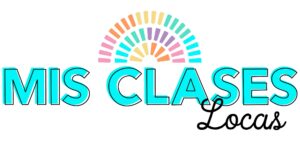Inside: A no prep way to get your students speaking in Spanish the whole class period. Rotating Partner Conversations in upper level Spanish
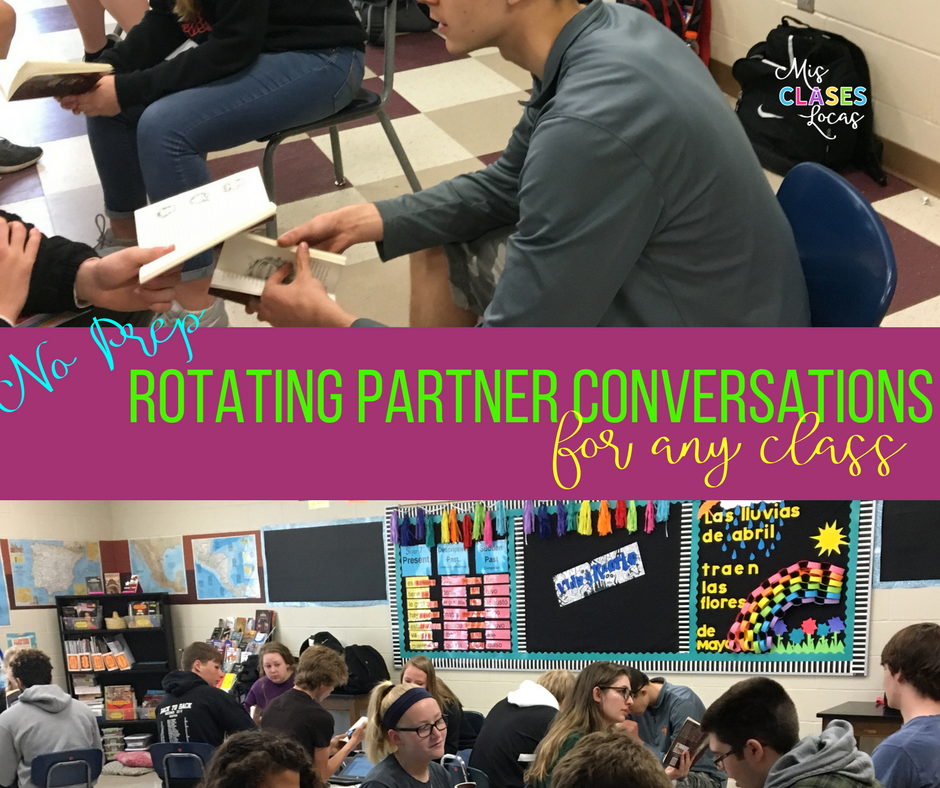
Hey, hey we made it to May! Is anyone else feeling exhausted teacher in May? I think we can attribute it to all of the end of the year events, award ceremonies, graduation parties, concerts, finals, planning for next year, and more.
At the same time, I know I have those classes that have just plain given up. With nice weather and late-night track meets, my first hour is not mentality there, and that is if they even show up to school. But, today I had a ray of light in that class, and with a last-minute idea with 0 prep on my part, they spent 40 minutes speaking in Spanish!
Reviewing Vida y Muerte
For some background information, I did this activity with my Spanish 3 students, who just finished Vida y Muerte en la Mara Salvatrucha. Wednesday they finished the book and as a last-minute something to do after reading, I told them to describe the symbolism of each of the 16 chapter’s chapter artwork (an idea from the back of the book). They were to be prepared for discussion on Thursday on the symbolism of each chapter. In reality, my plans for Thursday just said “review book with interpersonal,” and I just came up with what we did on the fly.
Rotating Partner Conversations in Spanish Set Up
On the day of the discussion, we moved the chairs into pairs. (We ended up with one group of three due to an odd number). Students were allowed to use their books and symbolism notes since this was formative practice. I wanted them to be able to cite evidence to back up their justification. I also was more concerned with getting them to speak. I did not want them to run out of things to talk about if they had an unprepared partner.
Rotating Partner Conversations
I set a timer for 4-5 minutes and students just talked about the symbolism of the art in chapters one and two. They also just talked about the chapter in general, which was fine by me as it was a great review for everyone involved and they were staying in Spanish.
When the timer went off, students rotated and then talked about the next two chapters. To be honest, at first I did not even set a timer. Because I wanted to get a feel for how long they could go and then rang a timer when the conversation seemed to die down.
While they talked, I walked around with a clipboard of their names, taking a few notes. (This helped many stay on task in Spanish, and they may have even thought they were being graded). They talked with eight different partners, which helped to keep the conversation fresh and provide a variety of different levels of speaking partners.
Activity Reflection
Overall I was SO PROUD of this class for staying on task in Spanish for that long. It was an excellent review for those who have missed class. It also helped them dig deeper into the symbols and deeper meanings instead of just superficial comprehension questions. It was very little work for me and did not require preparation on my part. I got to save my own voice and energy, as they did all the work!
Rotating Partner Conversation Variation Ideas
- For novice students, shortened the time to just one minute.
- Students can stand in an inside/outside circle formation for a shorter variation.
- It could be shortened as a time filler at the end of class for just a 10-15 minute speaking.
- Instead of pairs it could be done in groups of 3-4 if they are given more specific roles.
- Instead of discussing chapters, each rotation could be a new topic related to your unit of study, or a new viewpoint to explore. This idea for an Interpersonal Speaking Blitz came from Amy Lenord. For example, we used with timers in a slide show to review the novel Tumba with topics like my school, and the school in the book, The Day of the Dead, for only one minute each. Students just asked and answered as many questions about the topic as they could before it switched.
- Each rotation could be a new character from the novel to discuss, or an element of literature such as setting, theme, climax, conflict, or a review.
- Project pictures for each rotation for students to discuss.
Other Novel resources you may enjoy
